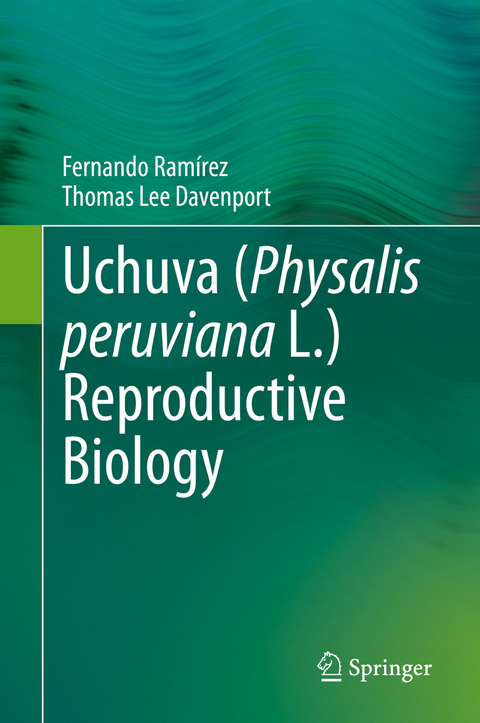
Uchuva (Physalis peruviana L.) Reproductive Biology
Springer International Publishing (Verlag)
978-3-030-66551-7 (ISBN)
lt;p>Fernando Ramírez is a biologist with over 20 years of research experience in the field of tropical plant biology. His research initially focused on mango flowering in the tropics. His research interests include tropical plant reproductive biology, particularly among solanum species such as uchuva (Physalis peruviana L.), tree tomato (Solanum betaceum Cav.), lulo (Solanum quitoense Lam.), and cocona (Solanum sessiliflorum Dunal). He currently works as an independent researcher.
Thomas Lee Davenport has spent his 45-year career at the Tropical Research and Education Center, IFAS, University of Florida conducting research on various aspects of tropical fruit reproductive physiology. His research efforts have included investigations in the mechanisms of floral induction and shoot initiation in both citrus and mango. This work has resulted in development of grower strategies to manage flowering and the timing of harvest of both crops. He also demonstrated that avocados are primarily self pollinated and wind pollinated in mixed cultivar plantings. Except in rare circumstances, avocado growers are, thus, not required to interplant cultivars to maximize production. He continues to advise tropical fruit growers worldwide on management strategies to enhance productivity of these and lesser-known tropical fruit species.
Abstract.- 1. Preface.- 2. Introduction.- 3. Flower morphology.- 4. Phyllotaxy and floral development.- 5. Pollen morphology.- 5.1 Pollen viability and germination.- 6. Pollination.- 6.1 Floral visitors and insect pollination.- 7. Fruit morphology.- 8. Propagation.- 8.1 Seed germination.- 8.2 Vegetative propagation.- 8.2 Cuttings.- 9. Fruit development.- 10. Fruit properties and health benefits.- 11. Breeding and hybridization.- 12. Genetic diversity.- 12.1 Chromosome number.- 13. Morphological diversity.- 14. Conclusion.
| Erscheinungsdatum | 01.03.2021 |
|---|---|
| Zusatzinfo | XX, 175 p. 119 illus., 109 illus. in color. |
| Verlagsort | Cham |
| Sprache | englisch |
| Maße | 155 x 235 mm |
| Gewicht | 455 g |
| Themenwelt | Naturwissenschaften ► Biologie ► Botanik |
| Naturwissenschaften ► Biologie ► Genetik / Molekularbiologie | |
| Weitere Fachgebiete ► Land- / Forstwirtschaft / Fischerei | |
| Schlagworte | cape gooseberry • Flowering • Morphology • Pollination • Solanaceae |
| ISBN-10 | 3-030-66551-8 / 3030665518 |
| ISBN-13 | 978-3-030-66551-7 / 9783030665517 |
| Zustand | Neuware |
| Haben Sie eine Frage zum Produkt? |
aus dem Bereich


